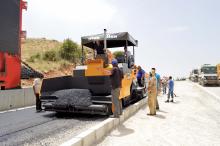Accelerating the adoption of Building Information Modelling (BIM) to improve efficient construction and the whole-life performance of structures has stepped up a gear, following the launch of four BIM Objects for
The company says that u BIM users can download objects for its Agilia, Artevia and Extensia concretes via BIMStore and its corporate website.
Lafarge Tarmac says it is the first in the readymix concrete sector to offer this solution. The data-rich objects allow clients to upload precise electronic information on a solution, such as a wall or a floor, and incorporate this directly into a 3D modelling tool, to create a real-life representation and enable the design of more sustainable, efficient buildings.
Jeremy Greenwood, managing director of Lafarge Tarmac readymix said: “With the countdown underway to the [UK] government’s 2016 BIM targets, we are leading the way by offering customers a practical solution that adds value to their projects. Over the next few years BIM is likely to become the single industry approach to construction. Many are already recognising the significant cost and efficiency savings offered by BIM, and our objects build on this by giving clients additional information to specify materials that improve efficiency and contribute to the whole life sustainability performance of buildings.”
Lafarge Tarmac’s BIM offering is said to help to support more sustainable construction and drive design improvements by providing even greater access to technical information, certification and performance data on its materials. This includes traceability, carbon footprint, and responsible sourcing information. BIM objects assists architects in designing better buildings, engineers to evaluate the performance of a product in situ, and contractors to plan and avoid scheduling clashes.
Greenwood added: “Our BIM solution has been specially developed to help add value during both design and construction, providing designers and engineers with the necessary performance data to create sustainable buildings. This technology will provide an important catalyst to drive greater early engagement across the supply chain; a critical issue if we are to achieve BIM targets and the wider efficiency, cost and sustainability challenges set out in the government’s Construction 2025 strategy.”
From 2016, all government-funded projects of £5million (€6 million) and over will be required to use BIM, and is likely to become mandatory on all construction projects in the near future. Construction 2025 sets out a vision and plan for long-term strategic action by government and industry to work together to put Britain at the forefront of global construction, including the identification and opportunity of increasing implementation of smart construction and BIM technologies.
Over and above any mandatory requirements, many clients are already capitalising on BIM’s numerous benefits and are using it on their developments. Of the money spent on public projects every year, government states that millions are lost through poor integration, with 30% of the construction process lost to rework; 60% of labour effort wasted; 10% lost due to wasted materials, and 3-5% of turnover wasted due to loss of interoperability.







